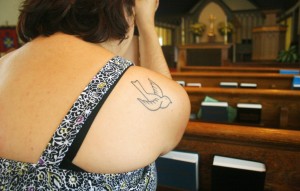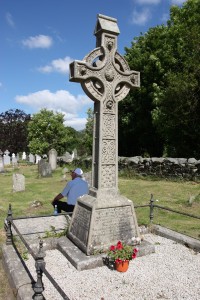 My recent guest appearance on The Techology Show left me wondering if I presented my church as stuck in the past with regard to worship as we discussed ritual as part of worship. In fact, our worship is contemporary, but I believe that ancient ritual is relevant for today. A recent article titled “Researchers: ‘Ritiual’ Atheists and Agnostics Could Be Sitting Next to You in Church” by Jeff Schapiro in The Christian Post illustrates this point. Schapiro states:
My recent guest appearance on The Techology Show left me wondering if I presented my church as stuck in the past with regard to worship as we discussed ritual as part of worship. In fact, our worship is contemporary, but I believe that ancient ritual is relevant for today. A recent article titled “Researchers: ‘Ritiual’ Atheists and Agnostics Could Be Sitting Next to You in Church” by Jeff Schapiro in The Christian Post illustrates this point. Schapiro states:
Those who fall into this category, according to the researchers, are nonbelievers who may have a philosophical appreciation for certain religious teachings, who like being part of a community, who want to stay in touch with their ethnic identity or who simply find beauty in certain religious traditions, symbols or rituals.
Furthermore, a multi-generational church can connect with God and each other through ritual. Our more senior members consider the older practices, such as hymn singing and Scripture reading, an integral part of their communal worship experience. Our younger members have never experienced some of these older practices or heard these hymns, so for them the old is new.
 Ritual also connects us with our Christian past, so we do more than just mix Charles Wesley with Chris Tomlin. We may include ancient, holiness, and mystic rituals in a service. We celebrate The Lord’s Table monthly, and one time, after sharing/drinking from the cup of Christ, we poured out the remainder as a libation. We also have an open time of testimony once a month, and I’ve been know to have an altar call. We practice contemplative prayer nearly every week.
Ritual also connects us with our Christian past, so we do more than just mix Charles Wesley with Chris Tomlin. We may include ancient, holiness, and mystic rituals in a service. We celebrate The Lord’s Table monthly, and one time, after sharing/drinking from the cup of Christ, we poured out the remainder as a libation. We also have an open time of testimony once a month, and I’ve been know to have an altar call. We practice contemplative prayer nearly every week.
But here is the catch for me, ritual must be relevant not rote. We will not read The Apostle’s Creed together just to do it, but if the theme of the service reflected one of the points of the creed, we would absolutely recite the creed. When people felt unsafe in our community due to a random shooting earlier in the week, we put on St. Patrick’s Breastplate. I have instructed our Scripture readers not to read from, the King James or New King James versions, and I do not preach from the New American Standard Version (even though I like it for study) simply because these versions are more difficult to understand.
The goals on Sunday morning are to:
- Worship God
- Edify Believers
- Present the Good News of Jesus Christ
We should accomplish this in a manner that engages all the senses (imagination, body, and spirit) of the contemporary person. Some contemporary services try to accomplish this through sensory overload. The video is big and colorful, and the music is loud. I have worshiped at Petra and D.C. Talk concerts. They were fun and exciting, but God didn’t recapture my imagination there. Even if I wanted it, I do not have the means to have a rock concert every Sunday. Instead, I use the tools I have, both old and new, and pray that through the power of the Holy Spirit we will enter the most holy place. If ritual is meaningful for events such as our wedding or government ceremonies, it can certainly have a place in contemporary Christian worship.
References:
Schapiro, J. (2013, July 4). “Researchers: ‘Ritiual’ Atheists and Agnostics Could Be Sitting Next to You in Church.” The Christian Post.
photo credit: tatooed woman praying megan.barton via photopin cc
photo credit: Celtic cross Chad Husby via photopin cc







Beautiful post. My husband enjoys the old hymns so much. He sings them with a group of friends (mostly seniors) on Saturday nights, and then either leads or helps with singing at a nursing home Sunday afternoons. There’s such depth and meaning in the old hymns. We sang to both my parents on their deathbeds.
Thank you for you comment. As you commented on the hymns, I think you’ll like the latest post. http://www.imitatiodei.org/worship-old-and-new/